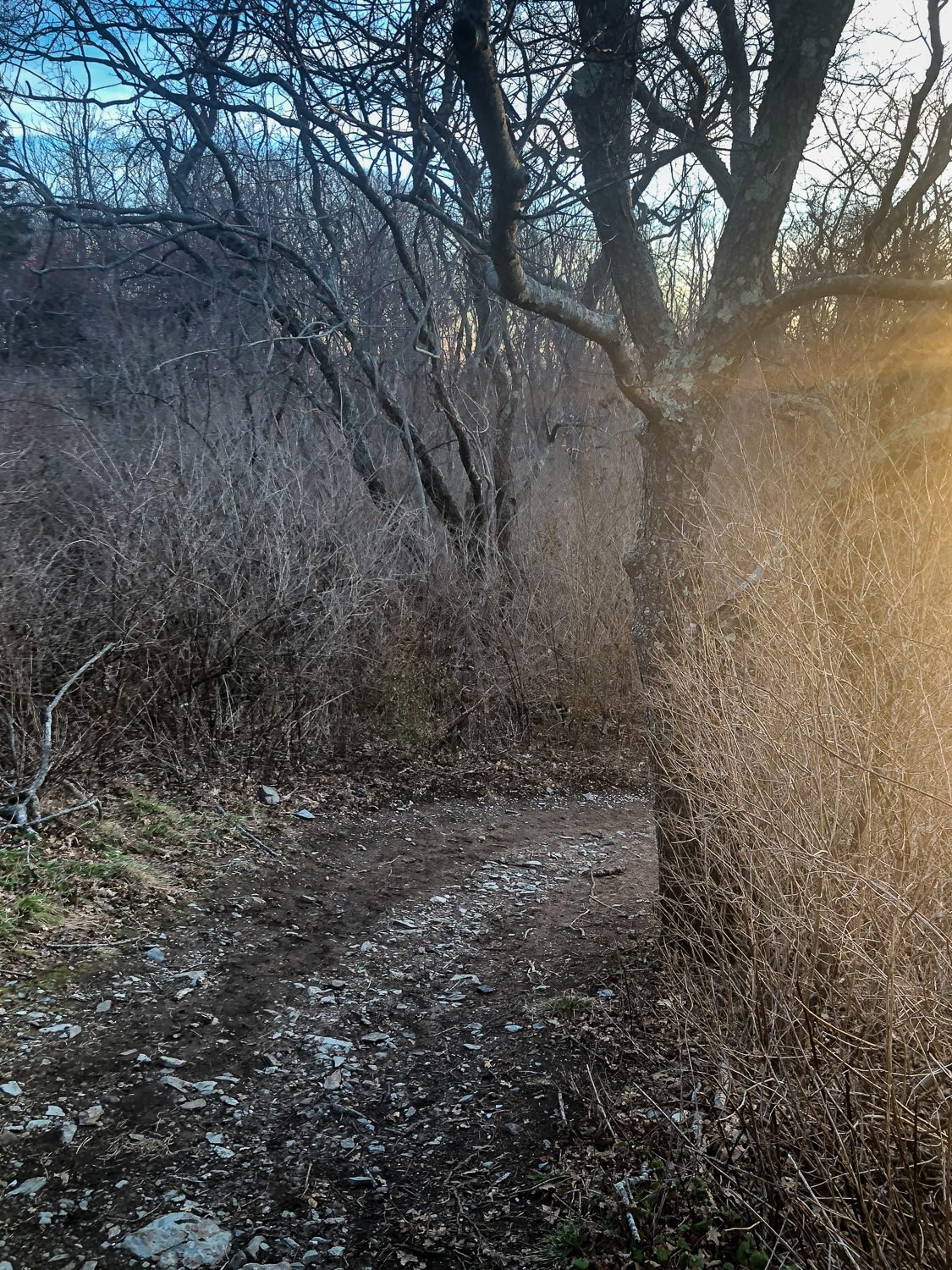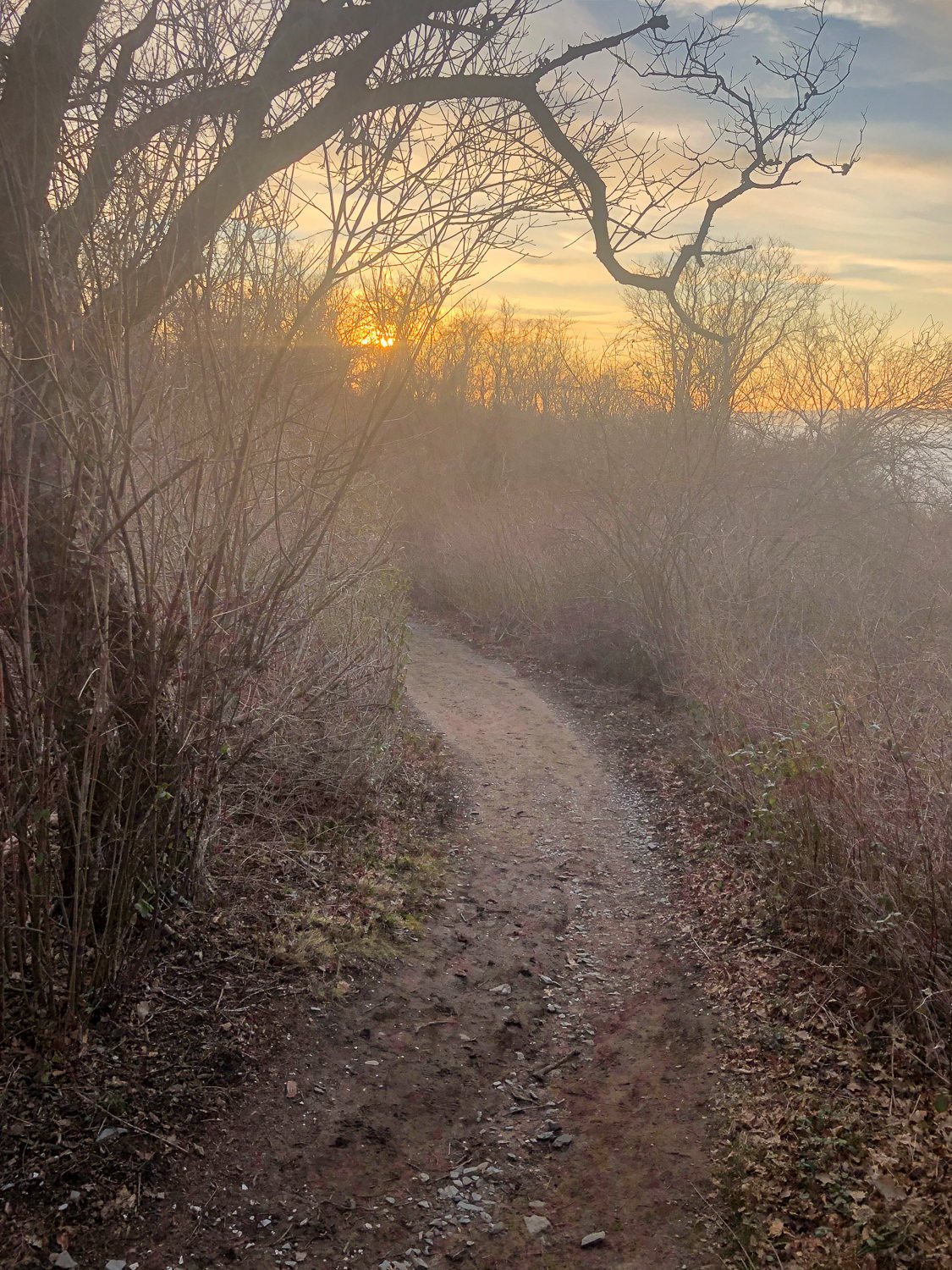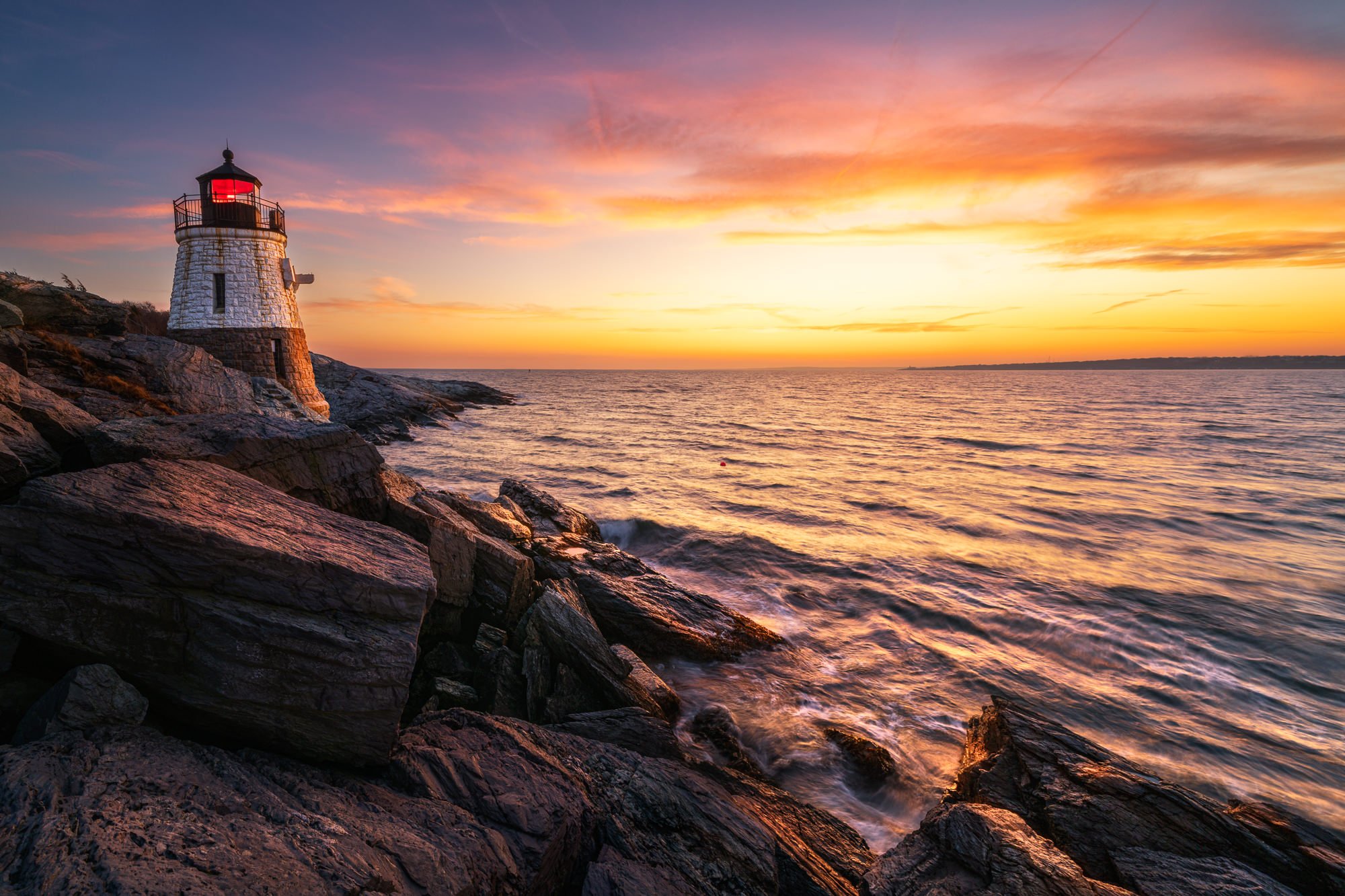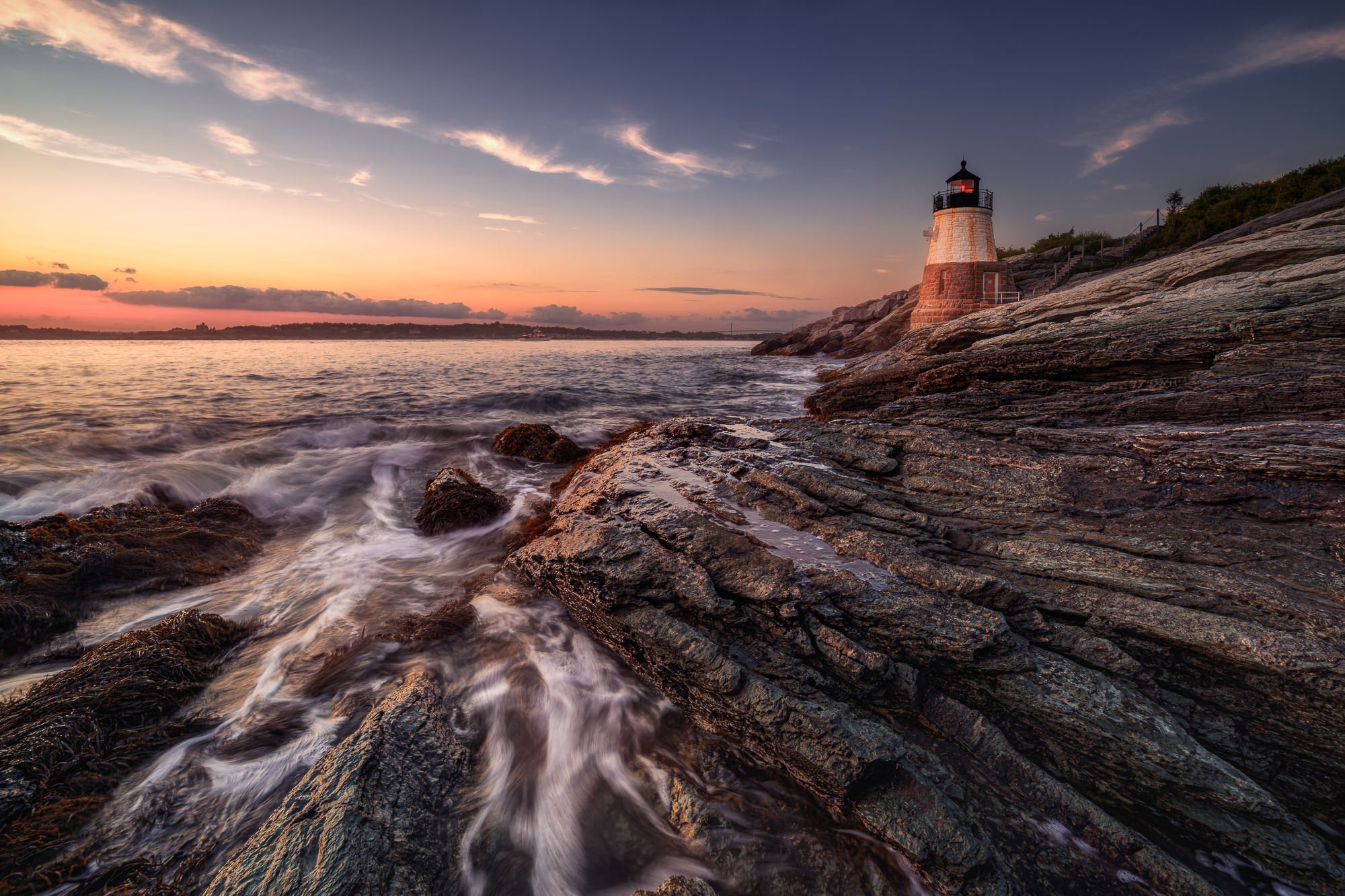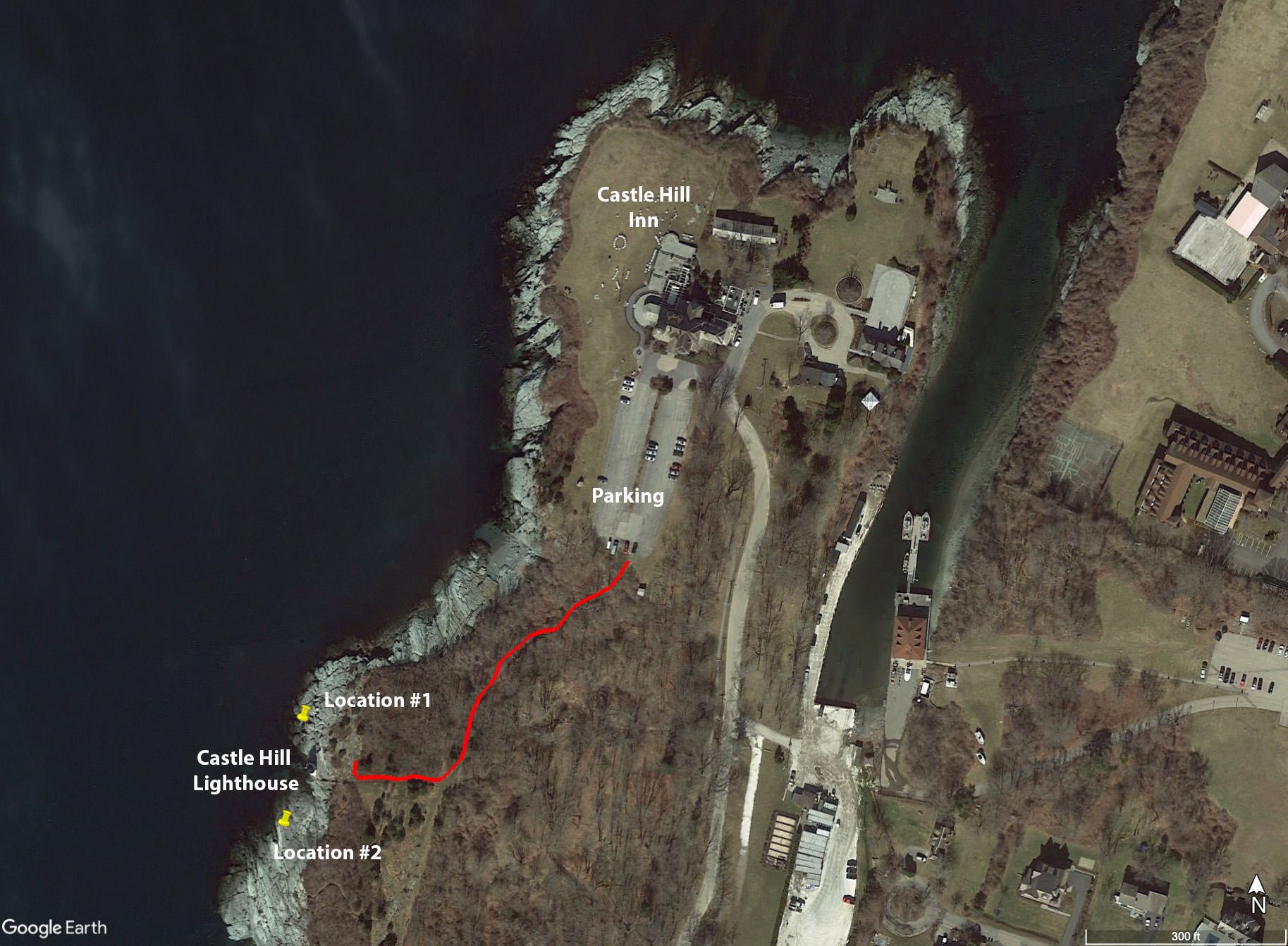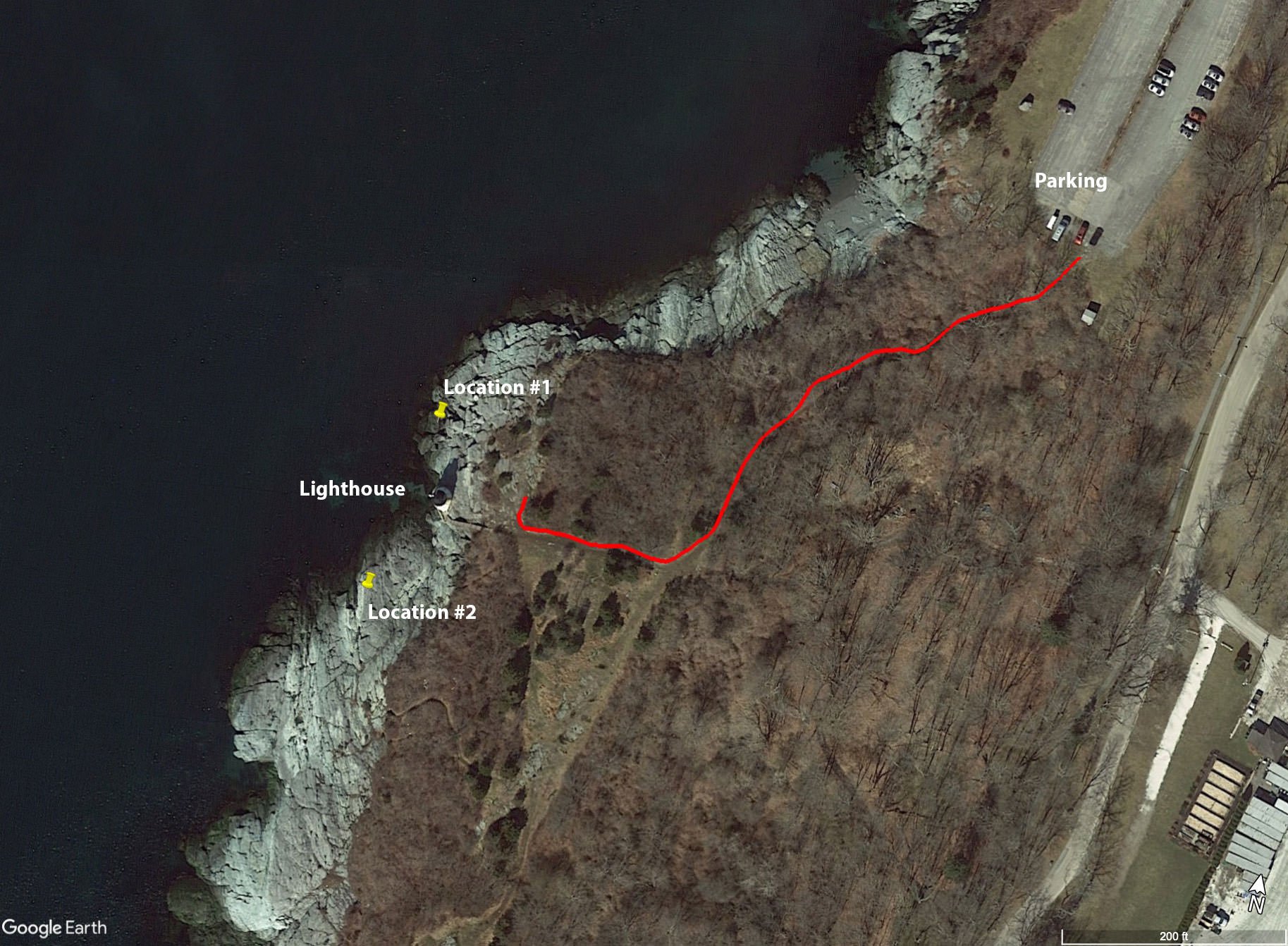Castle Hill
CASTLE HILL
Newport, RI
Image by Matt Reynolds @ mattreynoldsphotography.com
This is one of the smallest but most scenic lighthouses in Rhode Island. Built in 1890 and still an active navigation aid for vessels in the Narragansett Bay, the lighthouse is not open, but the rocks and surrounding grounds are easily accessible.
Despite being located in a popular tourist town, this small lighthouse is somewhat off the average tourist’s radar. Multiple composition opportunities and the changing direction of the sun make this a location that can be visited multiple times throughout the year. Bring a wide-angle lens and plan on arriving at least an hour before sunset.
Photos and location summary by Matt Reynolds
Trail Difficulty - MODERATE
I would rate the difficulty of this trail a 1-2 on a scale of 1-5 (with 5 being most difficult). The distance from the parking lot to the lighthouse is less than 1/4 mile but can become quite muddy after a recent rain or snowfall. There are steps going down to the lighthouse or you can hike to the left or right - both may requiring some rock scrambling.
The only difficulty or danger is if you choose to venture onto the rocks beyond the lighthouse. These rocks are jagged and next to the ocean, so be careful. Proper footwear is required. While the rocks usually are not particularly slick, the closer to the water’s edge you go, the more chance you take and a fall into the ocean here could be disastrous.
GPS Coordinates & Elevation
Sea Level - Elevation
View In Google earth
Download KMZ Trail File
Click Here to download the KMZ file for this location.
Directions
CLICK HERE to get driving directions to Castle Hill Inn parking area
To get to The Castle Hill Lighthouse, drive directly to the Castle Hill Inn (a luxury 40-acre resort property directly off Ocean Ave. in historic Newport). Parking is right next to the main building (mansion). It is best to park at the backside of the lot (opposite direction of the Inn).
The Castle Hill Lighthouse sets on the land adjacent to a premium resort and restaurant called The Castle Hill Inn. The Inn does not own the lighthouse or the water’s edge. However, they do own the parking lot and maintain the trail to the lighthouse. Please be respectful of their property and leave no trace, so this location can be visited for years to come by more than just guests of the inn.
Start of trail
The trail begins directly from the backside of the parking lot at the Castle Hill Inn. A short fairly level walk through the woods brings you to the lighthouse in less than 1/4 mile. The trail itself is easy, though can become quite muddy after recent rain or snowfall.
Once you reach the lighthouse, there are steps going down to the lighthouse or you can hike to the left or right (both may requiring some rock scrambling). The rocks next to the ocean are jagged, so care and proper footwear are required. While the rocks are not usually slick, the closer you get to the water’s edge, the more chance you can take and a fall into the ocean - which could be disastrous.
If you choose to venture onto the rocks beyond the lighthouse - the rocks are jagged so proper footwear is required.
Photography Tips
Make sure to arrive in advance of sunset with enough time to scout a composition on the rocks. The tide is not a big factor here, but each day will bring about changes in appearance based on where the water is reaching and the power (or calmness) of the sea that day.
Try to incorporate the action of the ocean against the rocks. To do so, you need to be on site to see what works best for a given sunset. Getting as low as possible is not always the best answer - as the way the lighthouse is built into the rock can obstruct your view. If you are too low, move to the left of the lighthouse. The height of your tripod can also change the look of the shot when using an ultra-wide lens. Experiment with different prospectives before settling on one. Ideally, you can find a location where the direction of the pointing rocks and / or splashing waves contribute to your composition (while standing in a safe place for you or your gear). Your best chance to capture water on the rocks is when the waves are receding.
A certain tidal situation which can create a special photographic opportunity for the left side of the lighthouse. After a high tide recedes, the ocean can leave small pools of water in the rocks. These pools can make for a great foreground and also a reflection opportunity for the red light. Something else to scout before settling on a composition. If you do happen upon an ideally placed pool, this would be a great time to experiment with filters to extend the exposure time. The best chance for a tide pool is after high tide (when the tide is receding).
Shutter Speed
Shutter speed is a personal preference. I have taken images using multiple second exposures for the lighthouse, but the water loses color and does not look as interesting. I prefer a 10th of a second - 1 second range to capture some wave movement. Having a remote shutter is helpful at the location.
Checking the Tides
It is good practice to check the tides when going to locations on the ocean (beneficial for compositional reasons and of course for safety). Although Castle Hill does not experience drastic shifts due to it being in a bay, it is still valuable to know if the water may come up or recede during the time you are there. Here is a link to check out the tides for The Castle Hill Lighthouse.
EXIF Data
Focal Length – 12 mm
Exposure – 1/5 sec @ f 11.0
ISO – 100
Date – Dec 22nd
Time – 5:15 pm
Best Time of Day to Shoot
This is a sunset location.
You can shoot Castle Hill Lighthouse - before sunset (when the sun is low on the horizon), at sunset or dusk. The rocks and lighthouse can catch nice direct sunlight glow just before sunset.
I generally prefer to shoot Castle Hill just after sunset, when the Red Light of the Lighthouse comes on and the darker sky adds more drama. As the evening sets, guest from the Inn will start to leave - which makes it more likely to not have anyone in your shot.
Best Time of Year
You can photograph Castle Hill Lighthouse any time of the year and the direction of the sun plays a major role in the resulting scene. I prefer Winter for optimal location of the sun in relation to the lighthouse.
The lighthouse and surrounding rocks make for multiple compositional opportunities. When you reach the end of the trail you will see the lighthouse straight ahead. This vantage point is good for sunset all year long.
In winter (Nov 15th to Jan 31st) - the right side of the lighthouse is preferred for sunset as the setting sun will be over the water and you will be able to compose with the sun and the lighthouse in the same shot. Location #1 was taken on December 22.
In summer - the left side of the lighthouse is preferred. Though the sun will be setting in this direction, the sun will be out of camera view to your left. The left side of the lighthouse has more rock and more compositional options and the added bonus of the Newport Bridge in the distant background. While you likely will experience increased visitors/photographers in the summer, the left side has much more room to spread out. Location #2 was taken on July 4th.
Since the Narragansett Bay is generally calm, this location would be one to visit on a rough sea day - regardless of time of year. Any wave action against the rocks adds interest; of course provided safety precautions are taken.
Lens(es) Needed
This location is best using an ultra wide to wide angle lens (12mm - 35mm).
The lighthouse is relatively small - and due to the way it is built into the rocks, you need to be fairly close to the lighthouse to capture it. If you move further back, you can capture the top of the lighthouse, but the base will be obscured. A super wide-angle lens will allow you to get close to the lighthouse, but still include the surrounding rocks and water. I would recommend a 12-24mm, 14-24mm, 16-35mm or similar range prime lens for this location. Except for trying to capture the bridge in back of the lighthouse, I don’t think you would use a longer length than 35mm in this location. Panoramic images will be difficult to stitch with the moving water.
Location #1 above was taken @ 12 mm on a full frame camera. I used f11 to keep the rocks closest to me in focus and 1/5 second shutter speed to capture some action in the waves over the rocks.
Location #2 below was taken at 14 mm on a full frame camera. Again, using f11 to keep the rocks closest to me in focus with 1 second shutter speed to capture the waves over the rocks.
Birds-Eye View
Permits
As far as I know there are no permits required at this location. Keep in mind and be respectful of the fact you will need to drive on, park at and walk on property owned by the Castle Hill Inn to reach this location. The Inn could revoke your access at any time.
There are signs mentioning the trail is the property of Inn and intended for use by their guests. The Inn has a restaurant and outdoor veranda - so if they ever enforce this policy - getting a drink would make you a guest.
I have witnessed drones at this location but unsure of the legality. There are no posted signs regarding drones.
There is no charge to park at the Inn. However, during special events I have seen valet parking required.
Direction of the Shot
The images above were shot at 160° for location #1 and around 30° for location #2.
Equipment Needed
A steady tripod and wide-angle lens are all you need in this location. You can experiment with filters if you want to smooth out the ocean.
Proper footwear for walking on potentially slick rocks over the ocean.
In summer, bug spray is highly recommended (not necessary in the winter).
Number of Other Photographers to Expect
I have never been the only person at this location. I have also never seen it so crowded that I had trouble finding a composition with other photographers. Largely this is due to having 2 different sides of rocks to spread out on.
Expect a handful of others to be around the general area. In the winter months this likely means a couple of other photographers and some folks staying at the Inn which come down to watch the sunset. In the summer months there may be 5-6 other photographers and several tourists. Fortunately, most of the tourists remain on the top of the lighthouse or the stairs. Other than potentially needing to be cloned out of the background, the tourists do not interfere with the ability to photograph this location.
Weekends will be more popular than during the week.
Weather
Weather can be very pleasant to cool in Fall and Spring. Hot in Summer but generally perfect sunset weather. Winter can be cold and bring snow and ice.
Cell Service
You can expect good coverage both at the parking area and at the lighthouse.
Lodging & Camping
Newport is a tourist destination so there is no shortage of places to stay. Expect drastic seasonal pricing for most places in the area (with Summer being very expensive). I would recommend looking at lodging in Middletown.
Nearby Restaurants
There is no shortage of great places in Newport to enjoy a nice dinner after a long day of shooting. The Castle Hill Inn has food at both their Dining Room and at The Lawn. Both are very nice, high end places just a few yards from the parking area.
Some personal favorites - click on the restaurant below for yelp review
Brick Alley Pub
(401) 849-6334
140 Thames St, Newport
The Mooring
(401) 846-2260
1 Sayers Wharf, Newport
22 Bowens
(401) 841-8884
22 Bowen's Wharf, Newport
Area Guides and Workshops
None




